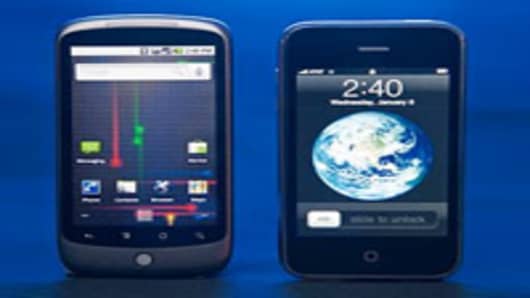Apple’s unveiling of the iPhone 5 on Tuesday at its Cupertino headquarters is just the latest sign that Silicon Valley is taking on a fresh mantle of Smartphone Valley, with its growing reputation making it a magnet for mobile operators around the world.
AT&T , Verizon and Vodafone have all just opened research, testing and incubation centres in San Francisco and the Valley only weeks apart.
“The reason we are here is this is the centre of the Earth right now when it comes to innovation,” said Fay Arjomandi, head of research and development for Vodafone in the US, at the opening of its Xone Lab in Redwood City last month.
Apple’s iPhone and Google’s Android operating system have set new standards for hardware and software in the mobile industry.
The app culture that both have engendered means there is a race on among operators to feature the newest trends and advances in software first, amid fierce competition for the attention of Silicon Valley developers.
Vodafone’s lab allows developers to incubate their ideas and test how apps and services would perform on the worldwide networks it replicates at its facility.
“We want to bring to market these ideas and accelerate the process – the hope is that six to nine months after we prove something here, it can be in the hands of a user in one of our operating countries,” says Ms Arjomandi.
A week after the Vodafone opening, AT&T launched its Foundry innovation lab in an old French steam laundry in Palo Alto.
It too emphasised the need to move “at web developer rather than carrier speed” – to the extent that much of the office furniture is on wheels and is easily reconfigurable.
“This is part of our transformation – to move from being a telecoms company to a technology company,” said John Donovan, AT&T’s chief technology officer.
The operators have felt the need to change as technology companies such as Apple and Google, which is buyingMotorola , have become more influential and handset makers have aligned themselves behind different operating systems.
“They have to show they are a part of the ecosystem, there’s been a big shift in the last year or so, when there has been the threat that carriers just become a dumb pipe [for data],” says Chris Jones, a telecoms analyst based in the Valley for the Canalys research firm.
Trevor Healy, chief executive of the mobile advertising platform Amobee, whose previous Valley company Jajah was bought by Spain’s Telefónica, has also noticed a change in attitude forced upon the operators.
“It’s not long ago that these companies were myopic and closed, but now there’s a carrot and stick for them in the shape of new revenue streams when their core revenues are stagnant and [they face] the stick of other big players like Google and Apple making ground,” he says.
The operators are arriving late to the Valley compared with infrastructure and handset players such as Ericsson and Nokia , who have had research centres here for years and base their chief technology officers in the Bay Area.
“The operators may have abdicated their positions with the operating systems and handsets, but now they’re putting a stake in the ground and focusing on app development, advertising and payments and billing,” says Mr Healy.
The consumer smartphone market may appear to have been carved up between Apple’s App Store and the Android Market, but operators feel they can still offer premium apps and services based on their network’s ability to know location, process payments, serve advertising, communicate with a range of devices and combine disparate services.
Mr Donovan boasted that the Foundry had 106 projects under way and that AT&T was now measuring itself on the openness of its network: 82 APIs (or access points into the network) had been launched over the past year.
Start-up demonstrations at both the AT&T and Vodafone opening events hinted at the “mash-ups” that were possible through mobile networks – for example, how an app recording running performances could link up with ones relaying sensor information on a person’s health.
Augmented reality applications, improved graphics for gaming and the ability for machines to talk to other machines – “the internet of things” – could all benefit from being hard-wired into the operators’ networks, the demonstrations proved.
It remains to be seen whether developers will be attracted in significant numbers to working with the operators, but Ms Arjomandi argues all parties can benefit.
“We would like to have the advantage of [perhaps one-year exclusivity] lead time to the market – to have a differentiation for us, we need to get that lead time,” she said.
“In exchange, we give them access to 340m customers around the world in 30-plus countries – so it’s definitely a win-win situation.”


